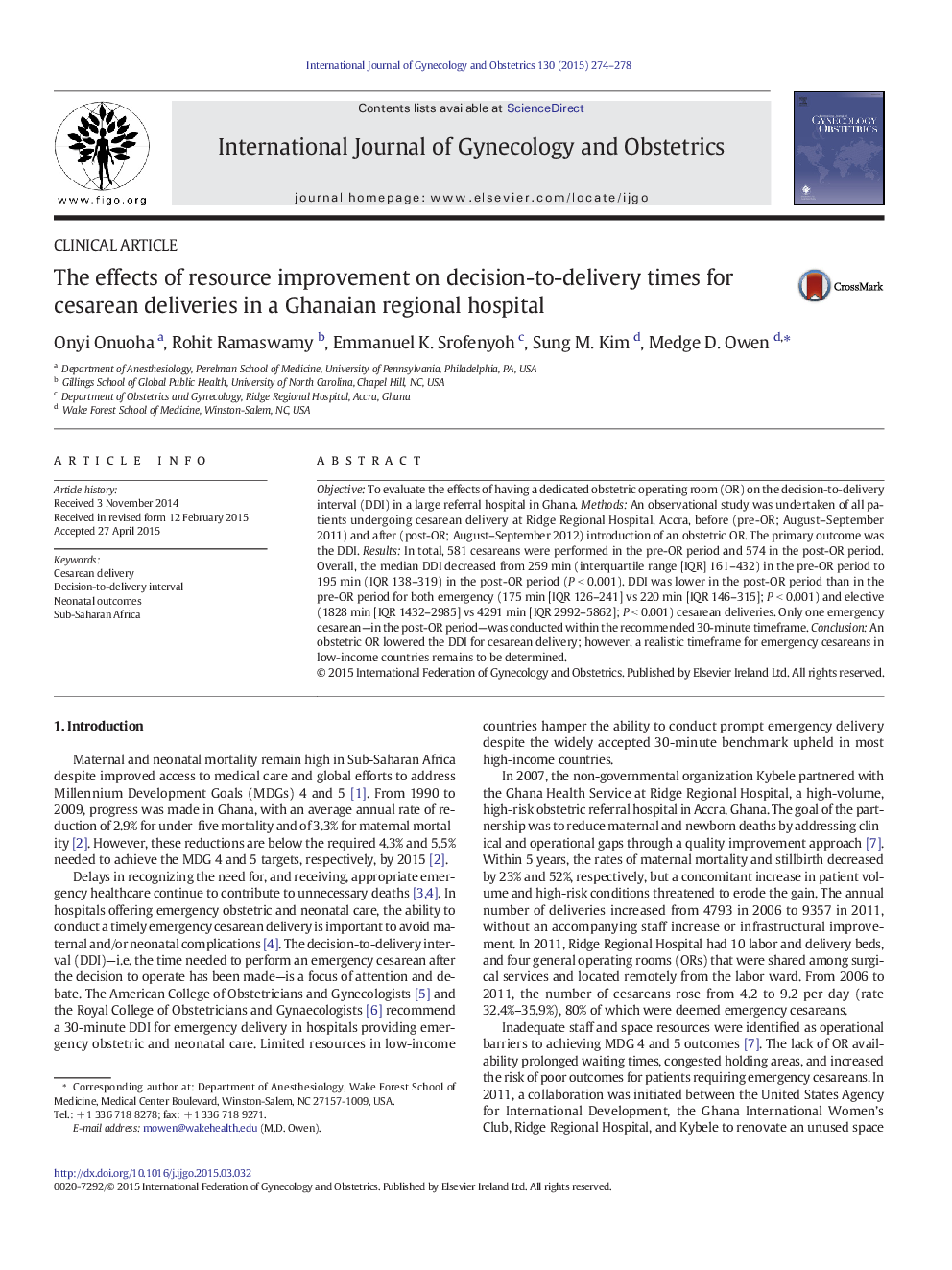| Article ID | Journal | Published Year | Pages | File Type |
|---|---|---|---|---|
| 3952580 | International Journal of Gynecology & Obstetrics | 2015 | 5 Pages |
ObjectiveTo evaluate the effects of having a dedicated obstetric operating room (OR) on the decision-to-delivery interval (DDI) in a large referral hospital in Ghana.MethodsAn observational study was undertaken of all patients undergoing cesarean delivery at Ridge Regional Hospital, Accra, before (pre-OR; August–September 2011) and after (post-OR; August–September 2012) introduction of an obstetric OR. The primary outcome was the DDI.ResultsIn total, 581 cesareans were performed in the pre-OR period and 574 in the post-OR period. Overall, the median DDI decreased from 259 min (interquartile range [IQR] 161–432) in the pre-OR period to 195 min (IQR 138–319) in the post-OR period (P < 0.001). DDI was lower in the post-OR period than in the pre-OR period for both emergency (175 min [IQR 126–241] vs 220 min [IQR 146–315]; P < 0.001) and elective (1828 min [IQR 1432–2985] vs 4291 min [IQR 2992–5862]; P < 0.001) cesarean deliveries. Only one emergency cesarean—in the post-OR period—was conducted within the recommended 30-minute timeframe.ConclusionAn obstetric OR lowered the DDI for cesarean delivery; however, a realistic timeframe for emergency cesareans in low-income countries remains to be determined.
